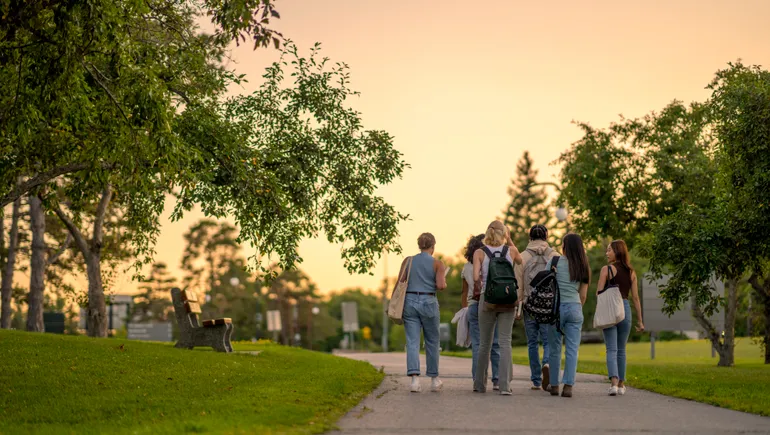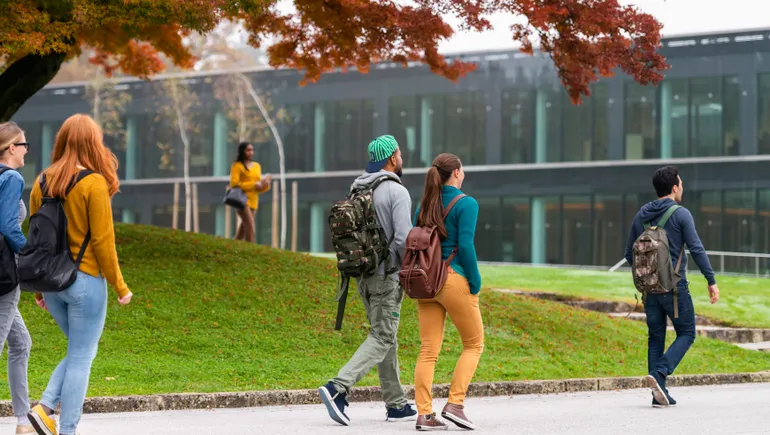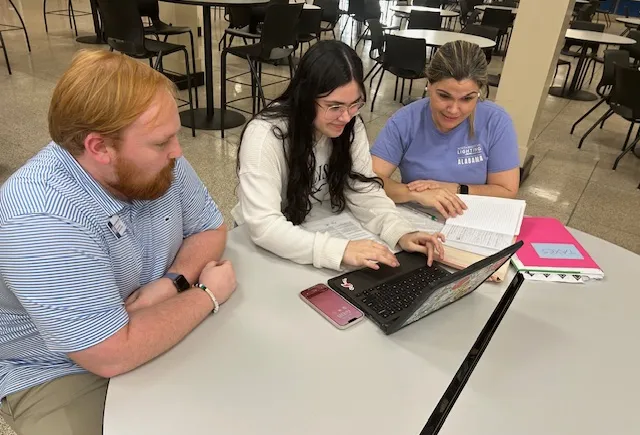[ad_1]
Diversity, equity and inclusion efforts typically emphasize teaching staff and the student body. But the physical spaces available to students also have a huge influence on how welcome they feel, according to Shannon Dowling, principal at the architectural firm Ayers Saint Gross.
Dowling was a 2020-2021 fellow at the Society for College and University Planning and created a playbook for colleges on how to create diverse and inclusive campus environments.
She spoke with Higher Ed Dive about the connection between DEI and learning spaces, how small changes can lead to significant progress, and why Americans with Disabilities Act compliance is just the start of accessible design.
This interview has been edited for clarity and length.
HIGHER ED DIVE: What first introduced you to the relationship between physical spaces and diversity, equity and inclusion?

Shannon Dowling
Permission granted by Shannon Dowling
SHANNON DOWLING: I actually came to the idea as a parent. My middle child is a learner with dyslexia, and when he was in 1st or 2nd grade, I realized that he could learn better when he was moving around. I gave him a wobble stool and when he used it, he was spelling words. When he was sitting in a typical chair, he couldn’t. So right there, it created a link for me between physical space and furnishings and how students learn.
I also taught at Virginia Commonwealth University for 12 years or so, and I paid attention to my students and the different stories that they brought into the classroom.
When I looked at the strategic plans of the top 50 institutions, as ranked by U.S. News & World Report, I realized every single one of them said that they wanted to improve diversity. But they all mentioned very specific pieces.
For example, they wanted to increase and retain faculty of color, to increase and retain students of color, to do DEI training. All of those goals are incredibly worthwhile, but no college actually mentioned how the campus itself would recruit and retain students.
You got input from over 200 students when creating your playbook. How did you engage with them and gather their feedback?
As an architect, I wanted to understand how the students themselves would design the spaces, and I’m a huge proponent of meeting students where they are. You have to reach out to them in lots of different ways, because the same way over and over will give you the same voices and a really homogenous conversation. Some students feel better filling out a survey form, some students want to talk to you in person. You want to cast a very wide net to include as many voices as you possibly can.
If a college has the ability to design something from the ground up, where do you recommend they start?
That’s a big question! If I could design a brand-new college building, it would be very inclusive and a space where everyone came to learn and engage, not a siloed disciplinary facility.
But universities often default to building new buildings, I think, without working to make the spaces they already have equal and equitable. What you end up seeing is the more well-resourced disciplines — like engineering, business and medicine — get bright, shiny new buildings.
Then you go over to the humanities or social sciences and they’re in the old hand-me-down spaces.
These students are paying the same price to attend. So what are you telling students when you say, “You’re in this old building with 40 old desks crammed in a room,” while other students are learning in a cool updated building? It seems like what one group is studying is less valuable than the other.
Most campuses have at least one outdated space, and institutions all have varying means to implement new DEI and campus policies. How does your playbook recommend updates be made while acknowledging that range in resources?
Of course, different institutions have different student bodies. Everyone has different resources. It seemed to me that they needed to be able to start where they are and not compare themselves to other institutions.
The things I talk about a lot are small, simple changes. I want colleges to know that they can make these really tiny changes and it’s going to mean something to the students, because that’s what they told me. The biggest issue is just giving students choice and agency over their environment.
What’s one example of a change like that?
For instance, the chairs in a room. If every single chair available is the exact same size with arms on it, then people with different body sizes may not be able to use it. Or if all chairs are armless, it could put somebody with a physical mobility issue in a hard place because they need a chair arm to balance and to push themselves up. Just by providing something as simple as a selection of different chairs makes it so that when someone walks into a room, they can find one that fits them without having to ask for an accommodation.
How could colleges without much additional money work to fund updates, even smaller ones like new chairs?
Colleges could use DEI funding. The colleges that are trying to address this now are largely using facilities budgets. But their maintenance reserves are always underfunded. They never have enough money to keep up.
Donors are also an option, and I think being able to tell a better story would be a good starting point. It’s possible donors don’t understand the whole story because we’re not talking about DEI in terms of physical space.
A college could share with donors how much the space it presents to its students matters. Maybe it rethinks donations to a particular inclusion or academic program and names it for a sponsor.
Early on, COVID-19 forced people to rely heavily on outdoor spaces. Do you think the pandemic has caused people to reevaluate those spaces and how they can be used?
There’s definitely more thought. People are starting to realize that outdoor space counts in terms of the type of spaces they have on campus and can use for instruction and social gatherings.
I’m hearing more and more, “How do we quantify our outdoor space?” Colleges want their outdoor space to give students the same voice and choice that the indoor space provides.
There are likely colleges that would say they don’t have any accessibility issues to address, since they are in compliance with the Americans with Disabilities Act. What would your response be?
Well, candidly, I would like to meet an institution that actually has every single one of its residence halls fully ADA accessible.
But I would hope to explain that there are two layers of accessible design. The first layer, the ADA guidelines, is the minimum standards that a space must meet so somebody in a wheelchair, with a visual impairment or a physical disability can get into the space and use it.
The second layer is Universal Design. That’s saying that everyone’s experience is going to be similar and equitable, no matter what their difference or disability is. So that’s not just thinking about physical differences. You’re thinking about people’s cultural backgrounds, you’re thinking about people having different types of neurodivergence. It’s a much broader consideration than checking a box.
[ad_2]
Source link









